
Showing the how behind the what.
This isn’t an article about which mic we use to record the show, or which software we use to edit the audio. This is an article about the people, the coordination, the process, and the way we keep everything organized and on track.
Quick background… The Distance is our podcast about small private businesses that have figured out the hardest thing in business: how not to go out of business. All the businesses we feature on The Distance have been in business for at least 25 years. Many are family run, multi-generational. They aren’t businesses that are in the news very often. But they’re on The Distance every other week.
The three people
The Distance is run by three people here at Basecamp:
- Wailin Wong — she’s the reporter who finds the businesses, interviews the owners/employees, writes the stories, and reads the stories.
- Shaun Hildner — he produces the show, records the audio, mixes in the sound clips, and makes sure everyone sounds their best.
- Nate Otto — he does the custom illustration for each show.
The process
First, we create a single Basecamp for “The Distance”. This Basecamp will hold everything we do for the show — all the communication about each episode, all the to-do lists and process we need to complete to publish a show, internal discussions and announcements about the show, brainstorming sessions, ideas, illustrations — anything — it all lives in this single Basecamp. So if anyone needs to catch up on what’s going on with The Distance, they can pop into this Basecamp and dig right in.
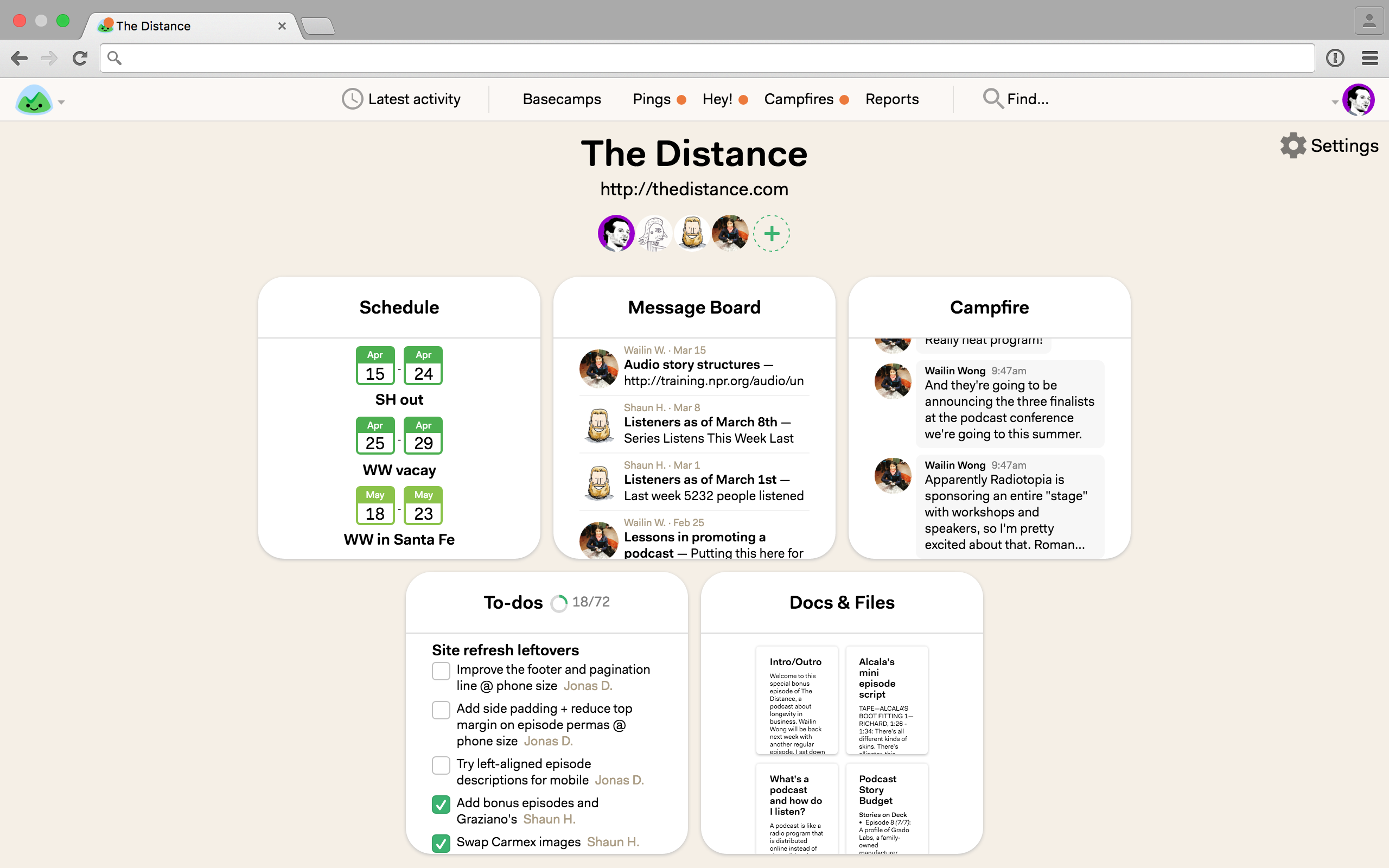
Once Wailin nails down a business for the next show (maybe she can write up how she picks ’em in a separate article), we create a standard to-do list with all the steps we need to complete to launch the show. Note: We create this to-do list once and then just copy it every time we need it for a future episode — it saves a bunch of time.
Here’s a to-do list for an upcoming show which is set to air on April 12th.
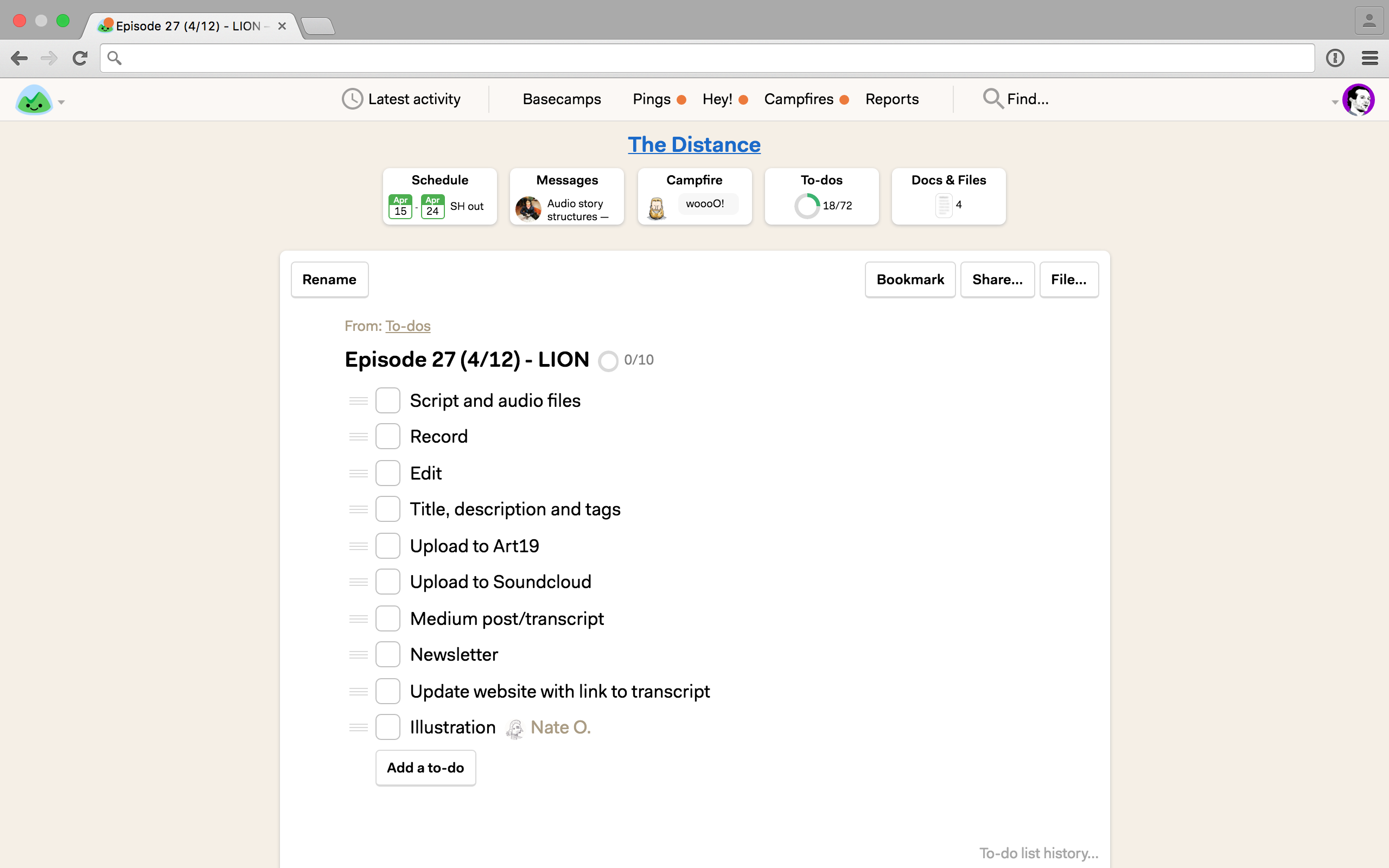
As parts of the show are completed, the list gets smaller, but you can always see what was already done:

Since Basecamp lets you comment on anything, we keep our discussions in context. This way we’re not trying to parse our a dozen different discussions criss-crossing in a chat room over days or weeks. No messes here. See those little blue comment icons after to-dos? Those signify threaded discussions about those to-dos.
Here’s an example of a workflow and discussion around illustrating the Rainbow cone episode:

The Distance Basecamp also has a message board. This is where we make big announcements about the show internally, share listener numbers, discuss ways to promote the show, etc. Everything is organized by thread so it’s really easy to know what you’re about to read and to refer back to anything later.

Here’s a post where I was calling for ideas on how we can promote the show to more listeners:

We use the Schedule inside the Basecamp to call out key dates when people are out of town, or when the next interview is schedule.
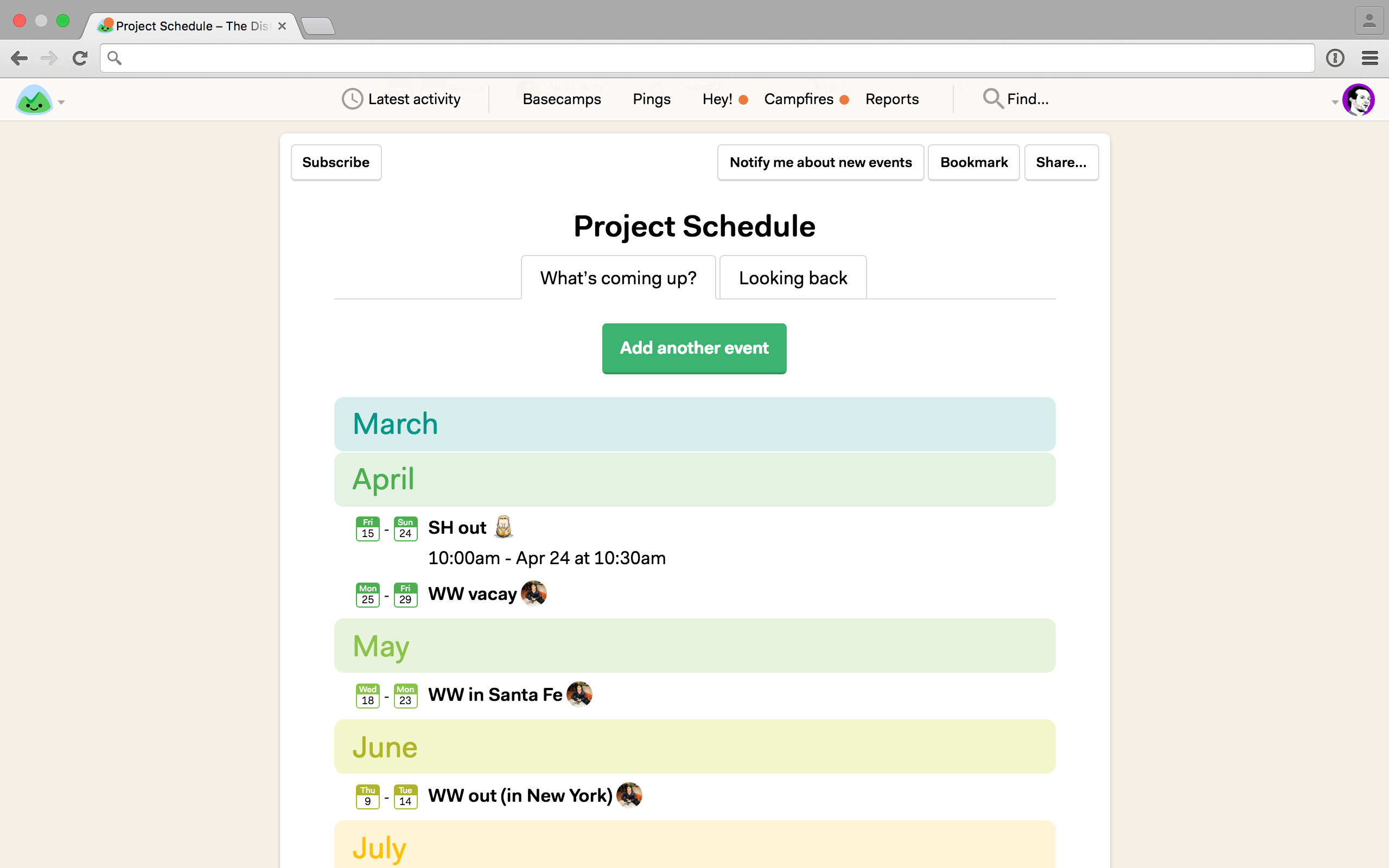
One day I noticed “Tape All Things Considered segment” on the calendar, so I clicked on the event, said “Woah woah!? in the comments, and Wailin filled me in. Now anyone who’s curious internally about how that happened can read back anytime without having to parse it out from some other conversation that happened somewhere else.
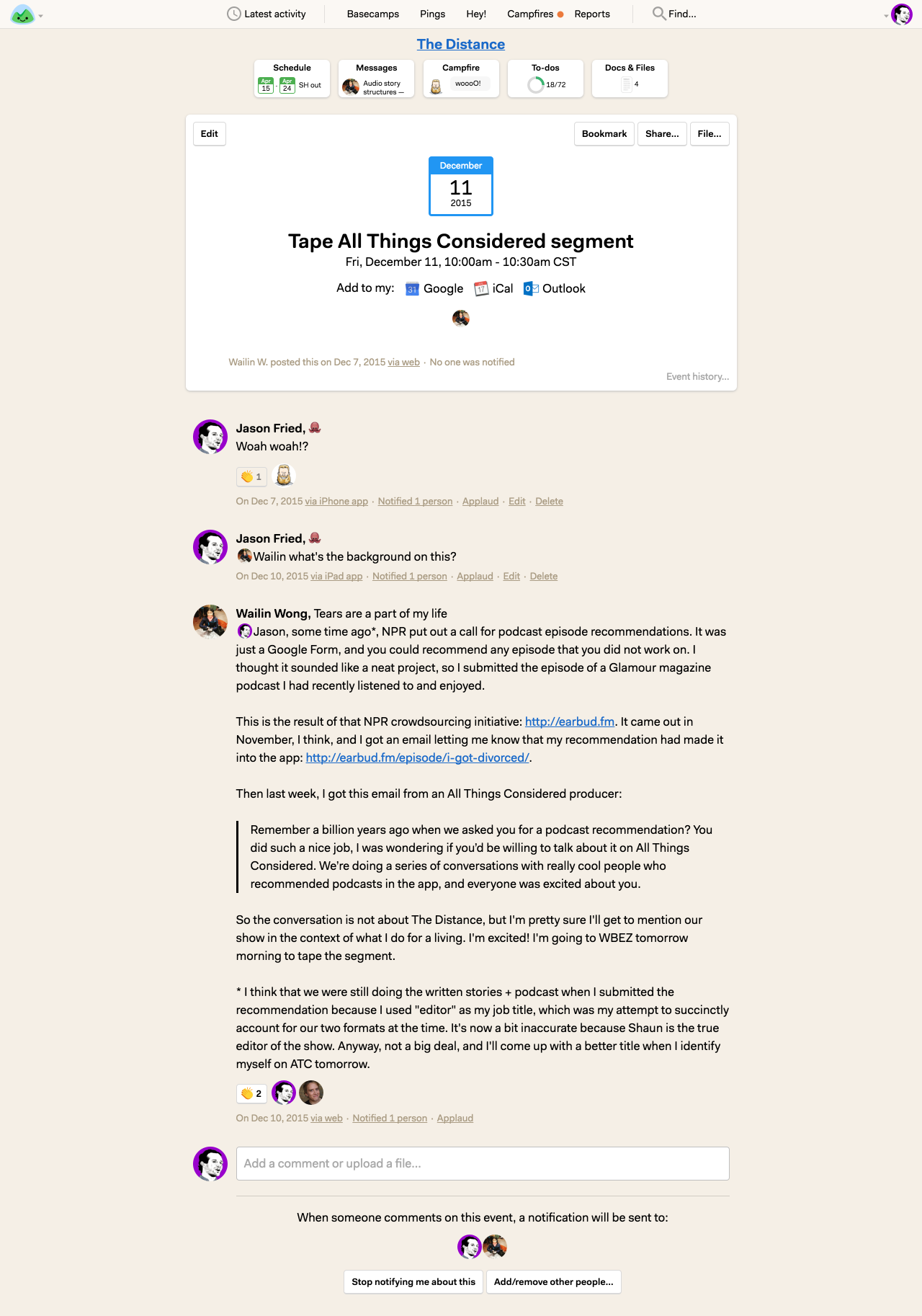
We use the Docs & Files section to keep track of miscellaneous notes, write-ups, transcripts (in folders for 2016 and 2015), a folder for some key illustrations, and some script brainstorms.

And lastly, sometimes we hop in the Campfire to have a quick chat about something. Here Wailin showed us what The Distance looked like on the screen in her rental car last week!
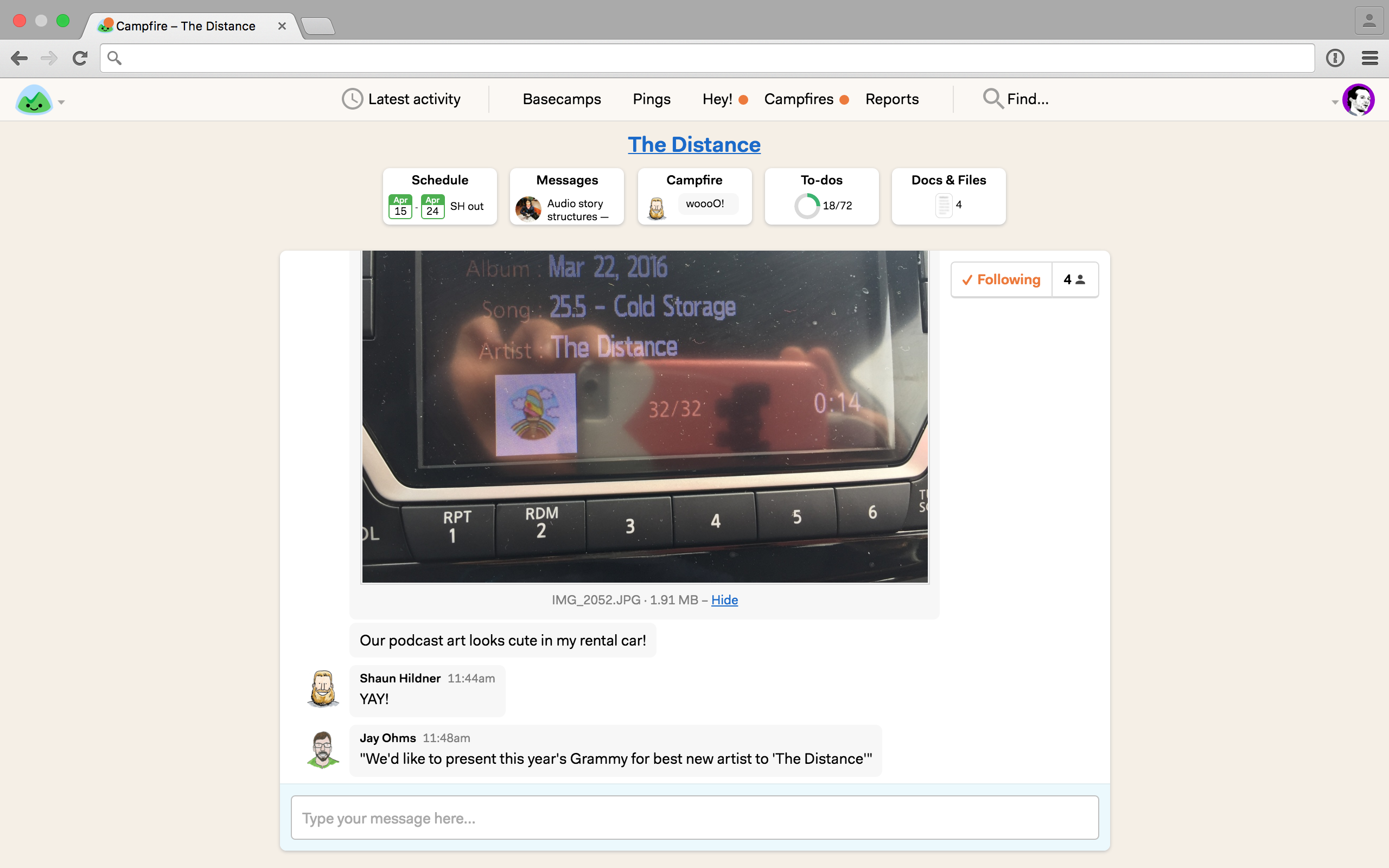
So there’s a look at how we run The Distance using Basecamp 3… A nice focused Basecamp with everything Distance related: a single to-do list for each episode, discussions neatly organized around topics, a schedule for big picture dates, a Campfire for quick chats to hash something out, and docs & files to keep track of some of the project artifacts.
We hope that was a worthwhile, helpful look at our process. A similiar method could be applied to any number of serialized projects.
Any questions? Have you ever run anything similar using Basecamp? Any notes and methods you’d want to share with us? We’d love to hear! Please post a comment below.

